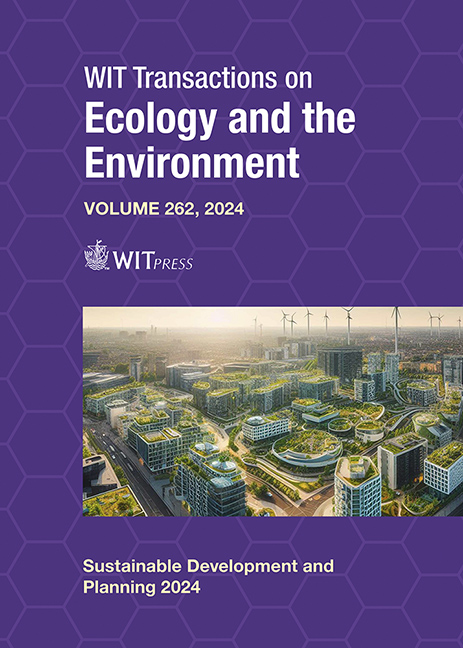SUSTAINABLE SPATIAL PLANNING FOR RURAL–URBAN FRINGES: A CASE STUDY IN TURKEY
Price
Free (open access)
Transaction
Volume
262
Pages
12
Page Range
243 - 254
Published
2024
Paper DOI
10.2495/SDP240201
Copyright
Author(s)
TOLGA LEVENT
Abstract
Sustainability was first used more than 50 years ago in a similar context as today. However, the ‘Our Common Future’ report by the UN Brundtland Commission in 1987 made the concepts of sustainability and sustainable development popular. This report defines sustainable development as the development that meets the needs of the present without compromising the ability of future generations to meet their own needs. One of the main discussions related to sustainable urban development focuses on rural–urban fringes. These discussions mostly include topics such as the promotion of economic development with rural activities, support of rural communities and protection of agricultural assets at the same time. However, these topics are generally neglected in countries where rural areas face huge pressure from uncontrolled urban development. Turkey is one of the typical examples where rural–urban fringes have been developing without considering their rural aspects. Within this framework, this study aims to discuss the main principles of sustainable spatial planning for rural–urban fringes in the Turkish case. The second part, after the introduction, focuses on the definition of rural–urban fringes along with their user perspectives, variables and components to reveal their complex and complicated nature. This part also contains theoretical frameworks to understand the formation and evolution of rural–urban fringes. The third part concentrates on the historical development of rural–urban fringes in the Turkish case after the World War II and aims to evaluate the Turkish case concerning the theoretical discussions of the second part. The problems of rural–urban fringes and their possible impacts in the Turkish case highlight why rural–urban fringes undoubtedly need to be considered in sustainable spatial planning approaches. The conclusion is about the principles of sustainable spatial planning for rural–urban fringes in Turkey, extracted from the theory by considering contextual practices.
Keywords
rural–urban fringe, sustainable spatial planning, Turkish case study





